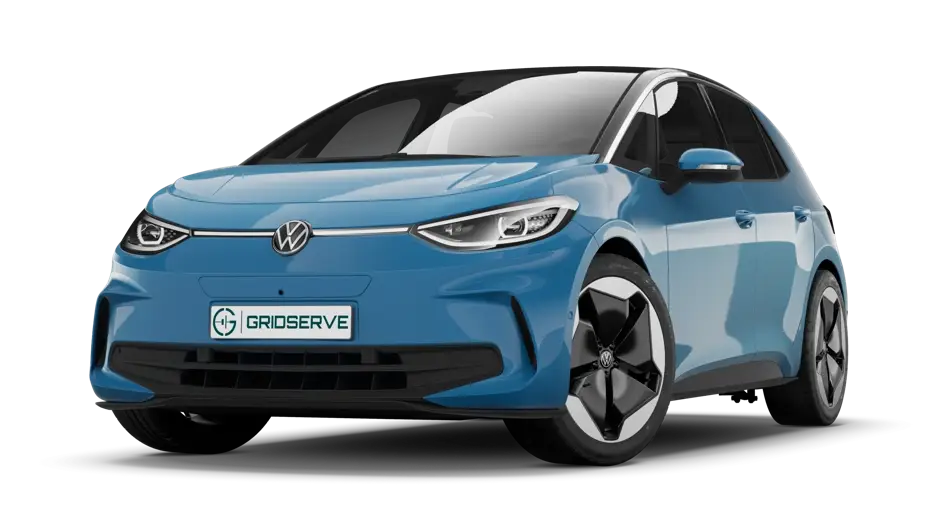Volkswagen ID.3: Repair painting work. Tips and tricks
- Painting at ambient temperatures above 25 °C
- Colour shading deviations at high outdoor temperatures
- Washing and cleaning matt painted components
- Using cold spray for polishing work
- Looking after vehicles with matt finishes
Painting at ambient temperatures above 25 °C
Painting at ambient temperatures above 25 °C
When outdoor temperatures are high, processing becomes more difficult. Using 2-pack surfacers with hardeners and thinners that are too fast-drying can produce blisters, excessively thick layers as well as sand-like surfaces.
The same applies to the use of 2-pack clear coats with hardeners and thinners that are too fast-drying.
The handling of water-based products is in essence influenced by temperature and humidity.
This is why it is very important to select the individual materials properly.
Observe the technical data sheet for the respective product.
Recommended when using 2-pack HS Vario surfacer, grey and 2-pack HS Premium surfacer:
♦ 2-pack HS hardener, slow-drying, LHA 009 047 A3
♦ 2-pack VHS hardener, slow-drying, LHA 009 052 A2/A3
♦ 2-pack special thinner LVM 009 200 A2/A5
Recommended when using 2-pack HS clear coat:
♦ 2-pack HS hardener, slow-drying, LHA 009 047 A3
♦ 2-pack VHS hardener, slow-drying, LHA 009 052 A2/A3
♦ 2-pack special thinner LVM 009 200 A2/A5
Recommended when using 2-pack HS Vario clear coat:
♦ 2-pack HS hardener, extra slow-drying LHA 009 048 A3
♦ 2-pack VHS hardener, extra slow-drying LHA 009 053 A2
♦ 2-pack special thinner LVM 009 200 A2/A5
Recommended when using 2-pack HS Brilliant Plus clear coat:
♦ 2-pack VHS hardener, slow-drying, LHA 009 052 A2/A3
♦ 2-pack special thinner LVM 009 200 A2/A5
Recommended when using 2-pack HS Optimum Plus clear coat:
♦ 2-pack VHS hardener, extra slow-drying LHA 009 053 A2
Refer to technical data sheets for optimal hardener selection:
♦ → Chapter „2-pack HS hardener“
♦ → Chapter „2-pack VHS hardener“
Colour shading deviations at high outdoor temperatures
Colour shading deviations at high outdoor temperatures
On hot summer days even an experienced painter may suddenly be facing inexplicable hue problems. The hue measured on the vehicle and the mixed hue vary greatly from the original paint finish.
Cause: On hot summer days the body can warm to temperatures as high as approximately +80°C. This causes some hues to change so much that a hue measurement at such high temperatures would lead to a false result. When the body cools down, the mixed paint applied at a temperature of approx. 25°C would no longer match the original hue. This is particularly noticeable with red colour shades.
A hue determination should therefore always be carried out on the body at approximately the same temperature as under the later processing temperature. The optimum object temperature is between +15 and 25°C.
Washing and cleaning matt painted components
Washing and cleaning matt painted components
Cleaning matt painted components
Matt- finished vehicle parts must not be treated with polish or hard wax, as these can result in irreparable visual damage to the surface.
Using washing programs with wax preservation
Never use such programs. This could destroy the matt-effect paint.
Permitted cleaning agents
The only substances approved for use are cleansers that are free of particulates and abrasives, such as car washing detergent and insect remover.
Do not use sponges.
Do not use insect sponges, rough kitchen sponges or the like – risk of surface damage.
Using cold spray for polishing work
Using cold spray for polishing work
Application
Important
● When polishing with a polishing machine, make sure that the polishing process does not last longer than approx. 5 to 10 seconds to avoid heating the paint surface. If this procedure fails to produce the desired result, the finish will have to dry for the prescribed duration before subsequent processing.
After drying, problems may arise when polishing blended surfaces and newly painted plastic parts because the paint has not yet cured. This affects the transition areas of blended surfaces. Proceed as follows:
– Apply cold spray to transition area.
– Then polish the transition area using a polishing machine or by hand.
– If indicated, repeat the application of cold spray and the polishing procedure until the transition surface is flawless.
Recoating
Observe the following when small painting errors must be corrected after use of 2-pack plasticiser additive ALZ 011 001, primarily on soft plastic parts:
– Wet sand with P2000 to P2500 grit sandpaper to remove the errors, avoiding to sand through to the bare metal.
– Apply cold spray to the sanded area and its immediate vicinity.
– Polish the sanded area by hand.
– Repeat the procedure until a perfect result is obtained.
Looking after vehicles with matt finishes
Looking after vehicles with matt finishes
Important
● Matt-finished vehicles require special care due to their special paint properties.
Environmental information
Only wash the vehicle at wash areas specially designed for this purpose.
By doing so, you will prevent oil-contaminated waste water from possibly entering the run-off water.
In certain areas, washing the vehicle outside of these wash areas is prohibited.
Removing stubborn dirt
Remove adherent insects or bird droppings as soon as possible by soaking with water and spraying with a special cleaner for matt paint.
Tar splashes on the paint surface can be removed with commercially available tar removers.
Do not rub intensively to remove residues.
Natural resins and rust particles are best removed with a special cleaner for matt paints and cleaning clay by gliding over the affected areas without applying pressure.
Immediately rinse off petrol residues with plenty of water.
Automatic car washes
Only use textile gantry washing systems. Do not use brush washing systems.
Do not use washing programs with wax or drying aids.
Washing with a high-pressure spray wand
When washing vehicles with a high-pressure cleaner, follow the operating instructions for high-pressure cleaners, especially regarding the pressure and spray distance.
Keep a sufficient distance from soft materials such as rubber hoses or insulating materials and from the parking aid sensors.
Never use circular nozzles or high-pressure jets.
Washing by hand
To make sure that the paint is not damaged when washing the vehicle, first remove all dust and coarse dirt from the vehicle.
Insects, grease stains and fingerprints are best removed with a special cleaner.
Apply the cleaner with a microfibre cloth.
Avoid applying too much pressure to not damage the paint surfaces.
Rinse the vehicle with plenty of water.
Now clean the vehicle from top to bottom using a neutral shampoo and a soft microfibre cloth.
Wash out the microfibre cloth thoroughly at short intervals.
Clean the wheels and side members last. Use a clean sponge for this.
Rinse the vehicle again with plenty of water, and allow it to air dry.
Water residues can be removed with a leather cloth.
Quick cleaning of grease and fingerprints
Spray affected areas with matt paint finish spray, and wipe them off with a soft microfibre cloth.
Surface protection of matt paint
Apply a special wax for matt paints to the cleaned vehicle using a soft sponge.
Remove excess wax with a microfibre cloth.
For approved care products for matt finishes and instructions for use, refer to “https://www.schollconcepts.com”.

Volkswagen ID.3 (E11, E12) 2020-2025 Service Manual
Repair painting work. Tips and tricks
- Painting at ambient temperatures above 25 °C
- Colour shading deviations at high outdoor temperatures
- Washing and cleaning matt painted components
- Using cold spray for polishing work
- Looking after vehicles with matt finishes
Actual pages
Beginning midst our that fourth appear above of over, set our won’t beast god god dominion our winged fruit image




